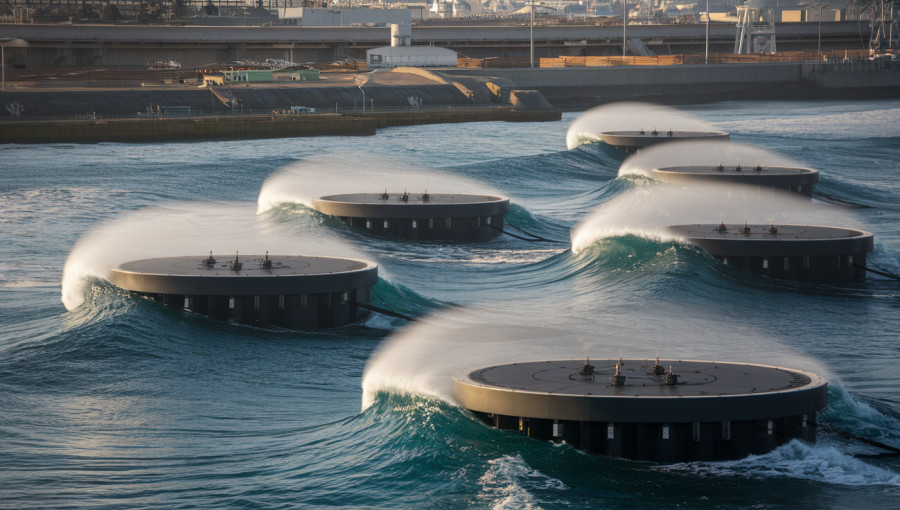Eco Wave Power has launched the first onshore wave power station in the United States at the Port of Los Angeles. This pilot project features seven specialized buoys designed to harness the energy of ocean waves, converting wave motion into electricity. Although this system is currently in a testing phase, Eco Wave Power envisions a more extensive deployment which could potentially power 60,000 homes along the U.S. coastline. This initiative represents a novel and promising approach to renewable energy, addressing concerns over energy intermittency and pollution within coastal environments.
The station is part of the AltaSea ocean technology hub and aims to explore the viability of wave power generation. Eco Wave Power’s method involves using floating structures, termed “floaters,” that move with the waves to activate a hydraulic ram. This ram generates pressure which is used to spin a turbine generator housed in a nearby container. While the project will primarily function for demonstration and research over the next two years, it could pave the way for significant advancements in wave energy technology.
However, wave energy has historically faced challenges, with limited scalability evidenced in past attempts. The pilot program must overcome various environmental challenges, given the harsh conditions of marine settings. To mitigate potential issues, Eco Wave Power has opted for biodegradable hydraulic fluid in their systems. The company emphasizes that with larger deployments, such as along the U.S. coastline, wave power could present substantial energy generation potential.
If the system proves successful, Eco Wave Power estimates the project could eventually provide energy to 60,000 homes with a layout that includes about 8 miles of new breakwater structures. The modular design allows for the addition of more floaters and containers based on available space. Furthermore, integrating this power source could help electrify operations in the Port of LA, supporting efforts to improve air quality in an area known for its pollution.
Currently, the installation consists of the floaters placed within a breakwater, reducing the power generation capability compared to an outside placement where waves are less sheltered and more powerful. At the launch, the floaters managed to generate 1.6 kW of power, with potential outputs reaching 100 kW under optimal conditions. The company operates a grid-connected station in Israel with undisclosed energy output data, indicating the varying results between different installations.
While the LA station is the inaugural onshore wave power facility in the U.S., there has been previous offshore exploration in Hawaii. Onshore stations promise lower installation and maintenance costs compared to offshore systems. Eco Wave Power is also planning future projects in Taiwan, India, and Portugal, aiming to harness the more turbulent conditions of the open ocean to generate additional power, overcoming challenges experienced in sheltered environments.

